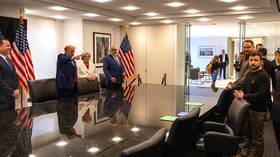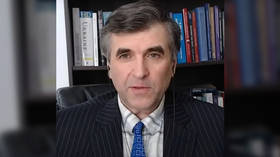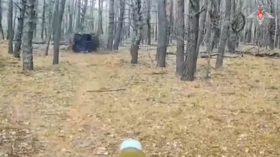Nuclear Arms Treaty: US and Russian presidents discuss progress
Dmitry Medvedev has met Barack Obama on the sidelines of the Copenhagen summit to discuss a new nuclear arms reduction treaty.
Despite doubts that the deal will be signed by the year's end, Andrey Nesterenko from Russia's Foreign Ministry remains hopeful.
“We very much hope that the outstanding issues will be resolved in the near future, probably within hours,” Nesterenko said. “The US and Russian presidents are planning to discuss the progress and outlook of the talks in Copenhagen on Friday.”
American officials say one of the main sticking points is how intercontinental ballistic missiles will be monitored.
Aleksandr Nikitin, a political analyst from the Moscow State University of International Relations, says both sides want to get something advantageous out of the new deal.
“Both sides are aiming at achieving tactical advantages,” Nikitin explained. “The American side wants to continue monitoring the plant where Russia is producing Bulava, Topol M and Iskander missiles, while Russia is saying the treaty implies the control of deployed warheads that have been supplied to the army, and not the ones that are only being produced. This is an example of the contradictions the sides are discussing now.”
Hans Kristensen from the Washington-based Nuclear Information Project points out the same divisive issues:
“Three issues are causing concerns. First, disagreement over who has the right to inspect missile facilities. The Russians are producing ballistic missiles, Americans are not. The other one being how to exchange data from missile tests. And the third is how many strategic delivery vehicles should the treaty actually decide on.”
The START 1 treaty, which expired earlier this month, was signed by then-Presidents Gorbachev and Bush in 1991.
It halved the number of strategic nuclear arms held by the sides, limiting the number of warheads on each side to 6,000.
Moscow and Washington have been working for six months to come up with a deal to replace it.
The new treaty is expected to cut nuclear arsenals to just over 1,000 warheads and 500 delivery vehicles.













